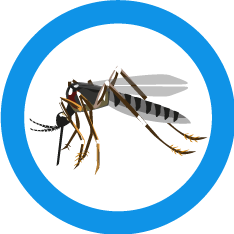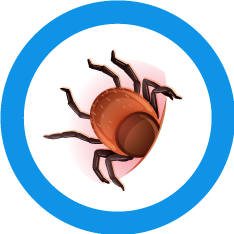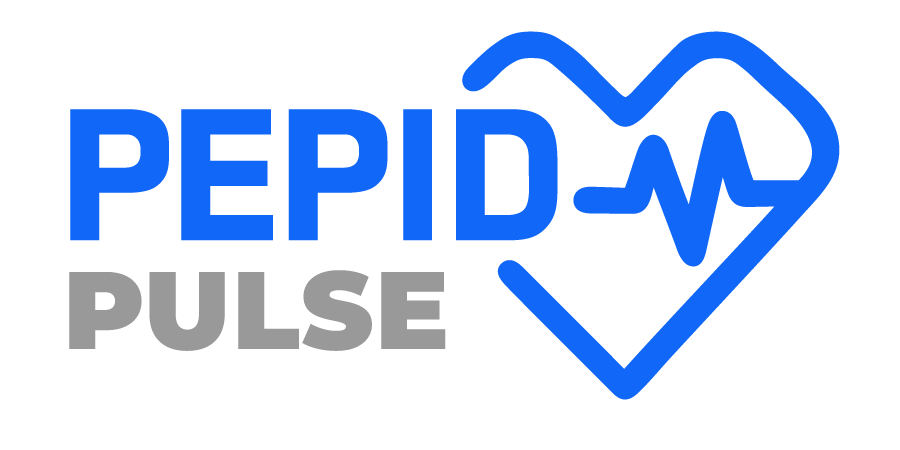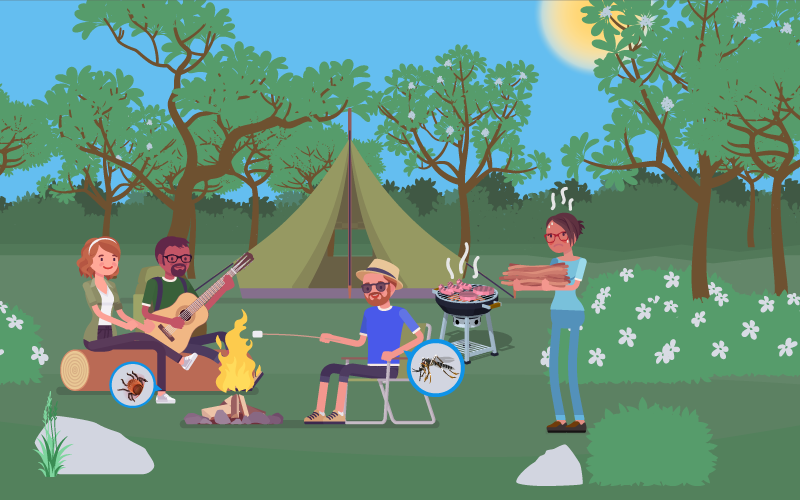Summer is in full swing, and what better way to welcome the hottest time of the year than with a fun-filled weekend in the great outdoors. Whether you’re unwinding in a private cabin in the woods or pitching a cozy tent by the lake, too much exposure and too little preparation can put a damper on your much-needed R&R.
We want you and your family to have as much safe summer fun as possible, so we’ve put together a quick list of T.I.P.S. (Trace the source, Identify the symptoms, Prevent the problem, and Share the handout) for 5 of the most common summer injuries that can leave you feeling itchy and unwell.
Take these T.I.P.S. poolside, lakeside, or mountainside – featuring a seasonal selection of PEPID’s Bedside Education handouts – yours to download and share for FREE.
Food Poisoning
Every year, as temperatures climb and safe food handling becomes trickier, approximately 1 in 6 Americans contract a food-borne disease. Of this number 128,000 are hospitalized and 3,000 die.
Trace
- Campylobacter jejuni
- The most common foodborne infection in the U.S.
- Onset 2-5 days after exposure to raw or undercooked poultry and/or unpasteurized milk
- Norovirus
- Onset 24-48 hours after exposure to contaminated seafood or water
- Staphylococcus aureus
- Onset 1-6 hours after exposure to meat, poultry, eggs, and/or creamy salads
- Salmonella
- Onset 12-72 hours after exposure to raw eggs, unpasteurized milk, and/or undercooked meat
- Clostridium perfringens
- Onset 8-16 hours after exposure to time- or temperature-abused meats, poultry, and/or gravy
- Responsible for many cases of “24-hour flu”
- E. coli O157:H7
- Onset 1-8 days after exposure to undercooked beef (especially hamburger), unpasteurized milk, and/or raw produce
Identify
- Typical: nausea, vomiting, diarrhea, abdominal cramping
- Higher risk: bloody diarrhea, dehydration, systemic symptoms
- Norovirus: Contagious for up to 72 hours after recovery
- Staphylococcus aureus: Diarrhea less prominent
- E. coli O157:H7: Fever less prominent
Prevent
- Clean: Wash hands and surfaces often.
- Germs that cause food poisoning can survive in many places and spread around your kitchen.
- Wash hands for 20 seconds with soap and water before, during, and after preparing food and before eating.
- Wash your utensils, cutting boards, and countertops with hot, soapy water.
- Rinse fresh fruits and vegetables under running water.
- Separate: Don’t cross-contaminate.
- Use separate cutting boards and plates for raw meat, poultry, and seafood.
- When grocery shopping, keep raw meat, poultry, seafood, and their juices away from other foods.
- Keep raw meat, poultry, seafood, and eggs separate from all other foods in the fridge.
- Cook: Cook to proper temperatures.
- Food is safely cooked when the internal temperature gets high enough to kill germs that can make you sick. The only way to tell if food is safely cooked is to use a food thermometer. You can’t tell if food is safely cooked by checking its color and texture.
- Use a food thermometer to ensure foods are cooked to a safe internal temperature.
- 145°F for whole cuts of beef, pork, veal, and lamb (then allow the meat to rest for 3 minutes before carving or eating)
- 160°F for ground meats, such as beef and pork
- 165°F for all poultry, including ground chicken and turkey
- 165°F for leftovers and casseroles
- 145°F for fresh ham (raw)
- 145°F for fin fish or cook until flesh is opaque
- Chill: Refrigerate promptly.
- Keep your refrigerator below 40°F and know when to throw food out
- Refrigerate perishable food within 2 hours. (If outdoor temperature is above 90°F, refrigerate within 1 hour.)
- Thaw frozen food safely in the refrigerator, in cold water, or in the microwave. Never thaw foods on the counter, because bacteria multiply quickly in the parts of the food that reach room temperature.

Heat-related Illnesses
Soaring summer temperatures peak and feel differently depending on your location and level of humidity. The body thermoregulates by sweating, but when the humidity is high, sweat does not evaporate as quickly. Past a certain temperature, bodily functions start to deteriorate, leading to organ damage, delirium, and death.
Trace
- Extremes in age
- Infants and children up to 4 years old
- People 65 years of age and older
- Obesity
- Certain medications, including some
- Heart medications
- Antihistamines
- Diuretics
- Psychiatric medications
- Stimulants (prescribed and illegal)
- Sudden changes in temperature such as with travel to a warmer climate
- High heat index
Identify
Heat-related illnesses follow a continuum that progresses in severity, starting with cramps, exhaustion, then eventually heat stroke.
Heat Cramps
- Quadriceps, hamstrings, gastrocnemius, rectus abdominus groups often affected
- Presentation may occur during activity or may be delayed
- History of inadequate fluid intake and/or decreased urine output
- No mental status changes
Heat Exhaustion
- Mild hyperpyrexia (Temp < 40°C)
- Nausea and vomiting, lightheadedness
- Signs of dehydration
- No mental status changes
- Tachycardia
- Diaphoresis
- Dizziness, Headache
- Thirst
- Fatigue, weakness
Heat Stroke
Classic (non-exertion) heat stroke (NEHS) usually involves infants, the elderly or debilitated patient. Exertion heat stroke (EHS) usually occurs in younger, physically fit population.
- Defined as temperature > 105.8° F [41° C] and anhydrosis
- Relative criteria; some patients still sweat
- Due to cool transport environment, etc, some patients have lower temperatures
- CNS symptoms always present
- Confusion, irritability, delirium, hallucinations, coma
- Ataxia, tremors, CN abnormalities, tonic muscle contraction
- Patient may be flaccid, or demonstrate decorticate or decerebrate posturin
Prevent
- During heat waves, frequently check on people
at risk for heat-related death, such as the elderly
and disabled or homebound people. - Never leave children alone in cars, and ensure that
children cannot lock themselves in an enclosed
space, such as a car trunk. - Limit sun exposure during midday hours and
in places of potential severe exposure, such
as beaches. - Drink plenty of nonalcoholic fluids, and replace
the body’s salts and minerals, which sweating
can release. Do not take salt tablets unless under
medical supervision. - Dress infants and children in cool, loose clothing
and shade their heads and faces from the sun with
hats or an umbrella. - Provide plenty of fresh water for pets, and leave
the water in a shady area.

Mosquito-borne Illnesses
Vector-borne diseases account for more than 17% of all infectious diseases, causing more than 700,000 deaths annually. More than 3.9 billion people in over 128 countries are at risk of contracting dengue, with 96 million cases estimated per year. Malaria causes more than 400,000 deaths every year globally, most of them children under 5 years of age.
Trace
- Dengue Hemorrhagic Fever & Zika Virus Infection: Aedes mosquitoes (Aedes aegypti and Aedes albopictus)
- Malaria: Plasmodium-type protozoans via the bite of infected Anopheles mosquitoes
- West Nile Fever: Culex species of mosquito (Culex pipiens, Culex tarsalis, and Culex quinquefasciatus)
Identify
Dengue Hemorrhagic Fever also known as “Break-Bone Fever”, is the the most prevalent mosquito-borne viral disease.
- Begins with a sudden high fever (as high as 104-105 degrees Fahrenheit, 4 to 7 days after the infection)
- A flat, red rash may appear over most of the body 2 – 5 days after the fever starts.
- A second rash, which looks like the measles, appears later in the disease.
- Infected people may have increased skin sensitivity and are very
uncomfortable. - Other symptoms include:
- Fatigue
- Headache (especially behind the eyes)
- Joint aches
- Muscle aches
- Nausea
- Swollen lymph nodes
- Vomiting
Malaria
- Symptoms usually appear about 7 to 30 days after infection though this can be up to a year or more) and may include:
- Shaking chills, with a fever; followed by heavy sweating and temperature drops
- Fatigue (extreme tiredness)
- General ill feeling
- Muscle and joint pain
- Headache
- Nausea
- Vomiting
- Diarrhea
- Severe disease may lead to shock
- Some patients may develop a stroke (cortical infarct) due to a malaria-induced blood coagulation disorder
Zika Virus Infection
- Acute onset fever
- Maculopapular rash
- Arthralgia
- Conjunctivitis
- Myalgia
- Headache
- Microcephaly in newborns due to Zika virus attack on fetal brain tissue
West Nile Virus Disease
- Traveled to endemic areas, mosquito bites
- Most asymptomatic
- Suspect in patients > 50 years old with unexplained meningitis/encephalitis in summer or early fall
- Mild illness for 3-6 days
- Flu-like symptoms (3-14 days after bite)
- Fever, headache, myalgias, diarrhea, loss of appetite
- Chills, fatigue, eye pain, URI (ie., cough, congestion)
- Severe disease: encephalitis/meningitis
- Mental status changes, weakness, photophobia
- Abdominal pain, stiff/painful neck, nausea, vomiting, diarrhea, movement disorders, asymmetric weakness
Prevent
- Use insect repellent: Environmental Protection Agency (EPA)-registered insect repellents are proven safe and effective, even for pregnant and breastfeeding women. Look for an EPA-registered repellant with the following active ingredients:
- DEET
- Picaridin
- IR3535
- Oil of lemon eucalyptus (OLE)
- Para-menthane-diol (PMD)
- 2-undecanone
- Cover up: Wear long-sleeved shirts and long pants.
- Keep mosquitoes outside: Use air conditioning, window and door screens, or sleep under a mosquito bed net.
- For travellers: Learn about destination-specific health risks and recommendations by visiting CDC Travelers’ Health website.

Burns & Sunburn
The U.S. Consumer Product Safety Commission (CPSC) estimates that over 200 people go the emergency room every day with a burn injury, with fireworks-related injuries peaking around the July 4th holiday. On average, a person’s risk for melanoma doubles if he or she has had over five sunburns.
Trace
The sun emits UVA (types 1 & 2), UVB, UVC, with 95% of only UVA/B reaching the Earth:
- Only UVA penetrates glass
- 80% UV radiation penetrates clouds
- Fair skinned, freckled persons who do not tan are most susceptible to sunburn.
- Humidity increases susceptibility to burns.
Young children are likely to pull pots and pans off the stove, and are less likely to remain mindful of how much sun exposure they’re getting.
The elderly can come in contact with something hot and not realize it as quickly due to reduced sensation. They also manifest burns more easily and severely due to their aging skin.
Identify
Sunburn
- History of sun exposure
- History of topical/PO medications
- Pain or tenderness (usually worse in the first 6 to 48 hours)
- Tanning beds onset: immediate; peak: 8hrs; resolve: 24-48hrs
- Red or pink skin that feels hot to the touch
- Itching
- Blisters
- Swelling
- Skin may peel
- Eye pain, diplopia if corneal damage
- Nausea, headache, fever, chills, abdominal pain, malaise with severe burns
Minor to Moderate Burns
- Superficial (1°) to Partial thickness (2°), no high-risk areas, BSA < 5%
- First-degree
- Redness, tenderness, pain
- Generally no blistering
- Minor skin damage
- Second-degree
- Damage extends beyond the top layer of skin
- Blisters
- Extremely red and painful
Major Burns
- Partial-Full thickness (2° to 3°), high-risk areas, BSA > 5%
- Third-degree
- Destroy both dermis and epidermis
- Can extend into tissue underneath
- Can appear white or charred
Prevent
- During heat waves, frequently check on people
at risk for heat-related death, such as the elderly
and disabled or homebound people. - Never leave children alone in cars, and ensure that
children cannot lock themselves in an enclosed
space, such as a car trunk. - Limit sun exposure during midday hours and
in places of potential severe exposure, such
as beaches. - Drink plenty of nonalcoholic fluids, and replace
the body’s salts and minerals, which sweating
can release. Do not take salt tablets unless under
medical supervision. - Dress infants and children in cool, loose clothing
and shade their heads and faces from the sun with
hats or an umbrella. - Provide plenty of fresh water for pets, and leave
the water in a shady area.

Tick-borne Illnesses
Tick exposure can occur year-round, but these little critters are most active during the warmer months of April to September. The most common tick-borne diseases in the US are: Lyme disease (about 35,000 reported cases yearly); Rocky Mountain spotted fever (about 2,500 cases); ehrlichiosis and anaplasmosis (about 1,000 cases per year each); and babesiosis (about 250 cases).
Trace
- Lyme Disease or “Lyme borreliosis”
- Caused by Borrelia burgdorferi, a spirochete bacteria
- Transmitted to humans through bite of infected Ixodes genus deer tick
- Ixodes scapularis usually in Northeastern and upper Midwestern U.S.
- Ixodes pacificus infects population in Western U.S.
- Rocky Mountain Spotted Fever
- Tick infected with Rickettsia rickettsii:
- American dog tick (Dermacentor variabilis)
- Rocky Mountain wood tick (Dermacentor andersoni)
- Brown dog tick (Rhipicephalus sanguineus)
- Occur throughout the US, but are most common in North Carolina, Tennessee, Missouri, Arkansas, and Oklahoma
- Tick infected with Rickettsia rickettsii:
- Ehrlichiosis
- Transmitted by the lone star tick (Amblyomma americanum) and blacklegged tick (Ixodes scapularis) infected with Ehrlichial bacteria:
- Ehrlichia chaffeensis
- Ehrlichia ewingii
- Ehrlichia muris eauclairensis
- Transmitted by the lone star tick (Amblyomma americanum) and blacklegged tick (Ixodes scapularis) infected with Ehrlichial bacteria:
- Babesiosis
- Transmitted by nymphal Ixodes scapularis ticks a.k.a. “blacklegged ticks” or “deer ticks”
- Caused by protozoans of genus Babesia
- B microti most common in North East (Massachusetts, Connecticut, Rhode Island, New York, and New Jersey) and upper Midwest (Minnesota and Wisconsin) parts of the United States
- B divergens
- Peaks during warm summer months
- Reservoirs
- White-footed mouse
- White-tailed deer
Identify
The most common symptoms of tick-related illnesses are:
- Fever/chills: With all tickborne diseases, patients can experience fever at varying degrees and time of onset.
- Aches and pains: Tickborne disease symptoms include headache, fatigue, and muscle aches. With Lyme disease you may also experience joint pain. The severity and time of onset of these symptoms can depend on the disease and the patient’s personal tolerance level.
- Distinctive rashes:
- Lyme disease
- Circular rash called erythema migrans or EM
- May appear within 3-30 days, typically before the onset of fever.
- Warm, but is not usually painful
- Rocky Mountain spotted fever
- Begins 2-5 days after the onset of fever
- Small, flat, pink, non-itchy spots (macules) on the wrists, forearms, and ankles and spreads to the trunk.
- Sometimes involves the palms and soles.
- Red to purple, spotted (petechial) rash is usually not seen until the sixth day or later
- Erlichiosis
- Appearance ranges from macular to maculopapular to petechial
- May appear after the onset of fever
- Babesiosis
- Mostly asymptomatic. If you do have symptoms, they usually appear 1 to 4 weeks after exposure:
- Chills and fever
- Headache and muscle aches
- Sweating
- Fatigue
- Nausea and vomiting
- Weakness
- Chills and fever
- Mostly asymptomatic. If you do have symptoms, they usually appear 1 to 4 weeks after exposure:
- Lyme disease
Prevent
Before going outdoors:
- Know where to expect ticks. Ticks live in grassy, brushy, or wooded areas, or even on animals. Walk in the center of trails.
- Treat clothing and gear with products containing 0.5% permethrin.
- Use Environmental Protection Agency (EPA)-registered insect repellents containing DEET, picaridin, IR3535, Oil of Lemon Eucalyptus (OLE), para-menthane-diol (PMD), or 2-undecanone.
- Do not use insect repellent on babies younger than 2 months old.
- Do not use products containing OLE or PMD on children under 3 years old.
Coming inside from the outdoors:
-
Check your clothing for ticks. Tumble dry clothes in a dryer on high heat for 10 minutes to kill ticks on dry clothing after you come indoors. If the clothes are damp, additional time may be needed. If the clothes require washing first, hot water is recommended.
-
Examine gear and pets. Carefully examine pets, coats, and daypacks.
-
Shower soon after being outdoors. Showering within two hours of coming indoors has been shown to reduce your risk of getting Lyme disease.
-
Check your body for ticks after being outdoors. Conduct a full body check upon return from potentially tick-infested areas, including your own backyard. Use a hand-held or full-length mirror to view all parts of your body:
- Under the arms
- In and around the ears
- Inside belly button
- Back of the knees
- In and around the hair
- Between the legs
- Around the waist

Resources
- Charles, Katie. “Daily Checkup: Summer Brings a Rise in Burn Injuries at Barbecues and Playgrounds.” Nydailynews.com, New York Daily News, 9 Jan. 2019, www.nydailynews.com/life-style/health/daily-checkup-summer-brings-rise-burn-injuries-article-1.1833153.
- “Foodborne Illnesses and Germs | Food Safety | CDC.” Centers for Disease Control and Prevention, Centers for Disease Control and Prevention, www.cdc.gov/foodsafety/foodborne-germs.html.
- “Heat-Related Illness | Features | CDC.” Centers for Disease Control and Prevention, Centers for Disease Control and Prevention, www.cdc.gov/features/prevent-heat-illness/index.html.
- PEPID Bedside Education Handouts, https://pepid.com/Products/bedside-education/
- “Prevent Mosquito Bites | Features | CDC.” Centers for Disease Control and Prevention, Centers for Disease Control and Prevention, www.cdc.gov/features/stopmosquitoes/index.html.
- “Sun Safety | Skin Cancer | CDC.” Centers for Disease Control and Prevention, Centers for Disease Control and Prevention, www.cdc.gov/cancer/skin/basic_info/sun-safety.htm.
- “Tickborne Diseases of the United States | Tick-Borne Diseases | Ticks | CDC.” Centers for Disease Control and Prevention, Centers for Disease Control and Prevention, www.cdc.gov/ticks/tickbornediseases/index.html.

